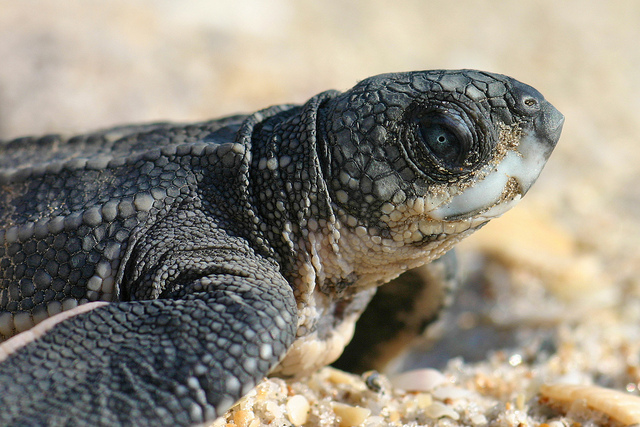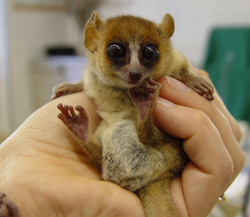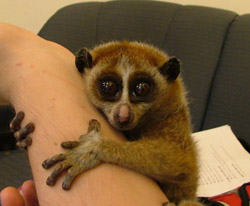Lemurs are arguably the world’s most adorable vertebrates. They’re also the most endangered, according to a recent study by Conservation International. A team of researchers found that an astonishing 90 percent of the 103 species of lemurs, native to Madagascar, are nearing extinction due to hunting and habitat loss caused by illegal logging on the island—the only place in the world that they live. Here’s the breakdown:
23 are now considered ‘Critically Endangered’, 52 are ‘Endangered, 19 are ‘Vulnerable’ and two are ‘Near Threatened’. Just three lemur species are listed as ‘Least Concern’.
If the internet has never shown you a picture of lemurs—which look kind of like monkeys but are actually more closely related to the slow loris—I don’t know what you’ve been doing with your time. But here are a few from Conservation International to catch you up to speed:
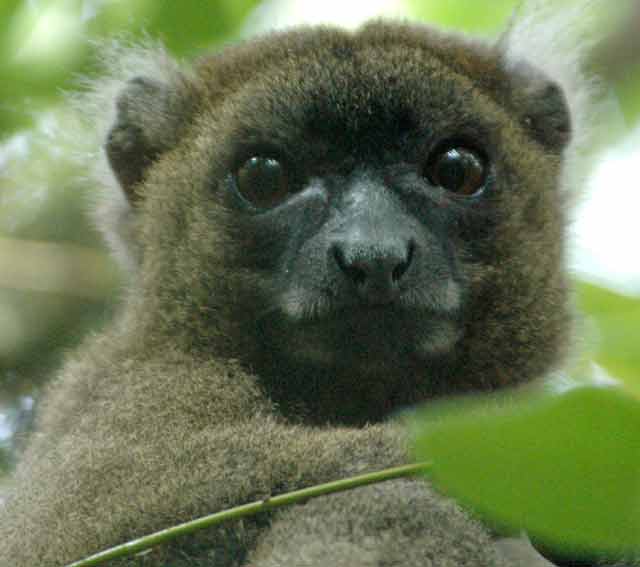 At five pounds, the greater bamboo lemur is one of the biggest of all the lemur species. © Conservation International/photo by Russell A. Mittermeier
At five pounds, the greater bamboo lemur is one of the biggest of all the lemur species. © Conservation International/photo by Russell A. Mittermeier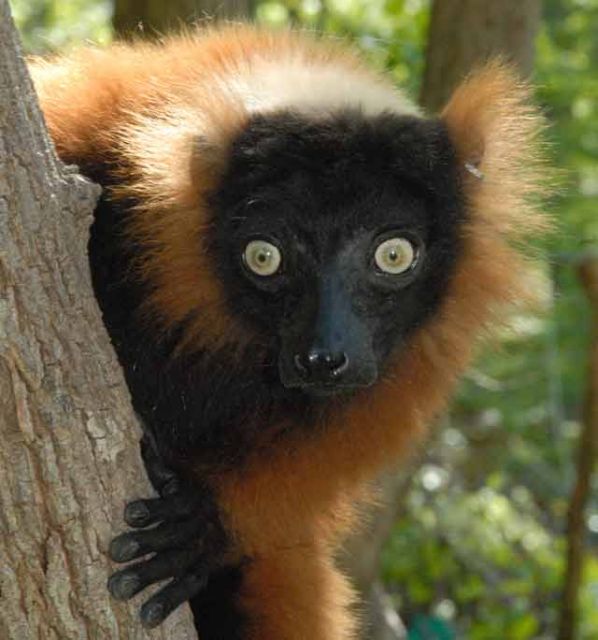 The red-ruffed lemur © Conservation International/photo by Russell A. Mittermeier
The red-ruffed lemur © Conservation International/photo by Russell A. Mittermeier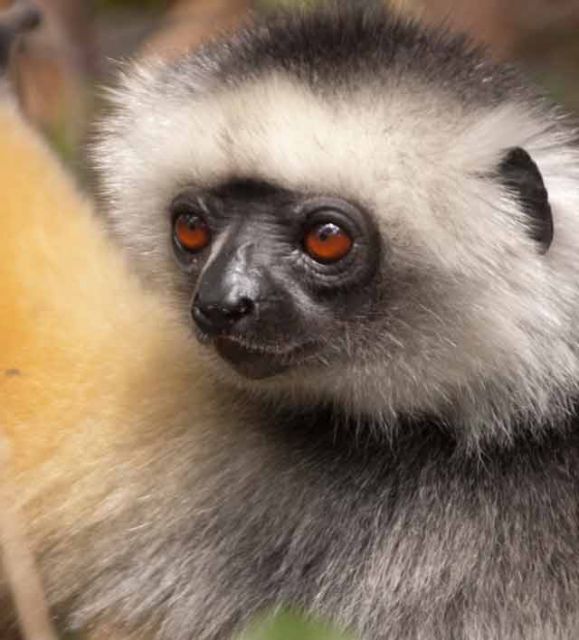 The diademed sifaka, a colorful species of lemur © Conservation International/photo by Russell A. Mittermeier
The diademed sifaka, a colorful species of lemur © Conservation International/photo by Russell A. Mittermeier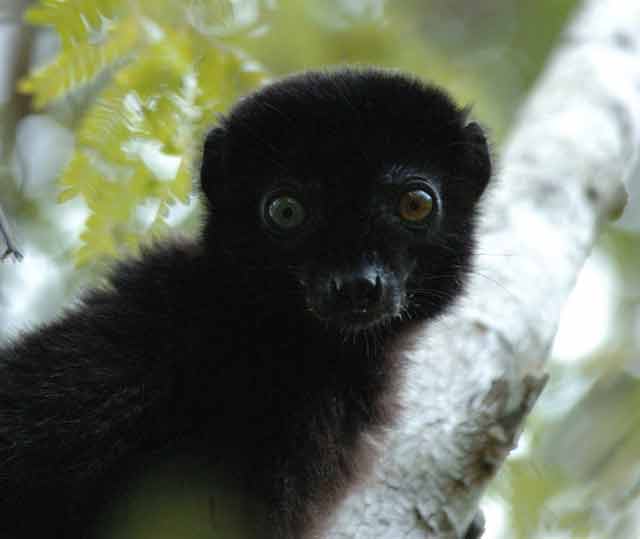 The critically endangered blue-eyed black lemur is the only primate species (besides humans) with blue eyes. © Conservation International/photo by Russell A. Mittermeier
The critically endangered blue-eyed black lemur is the only primate species (besides humans) with blue eyes. © Conservation International/photo by Russell A. Mittermeier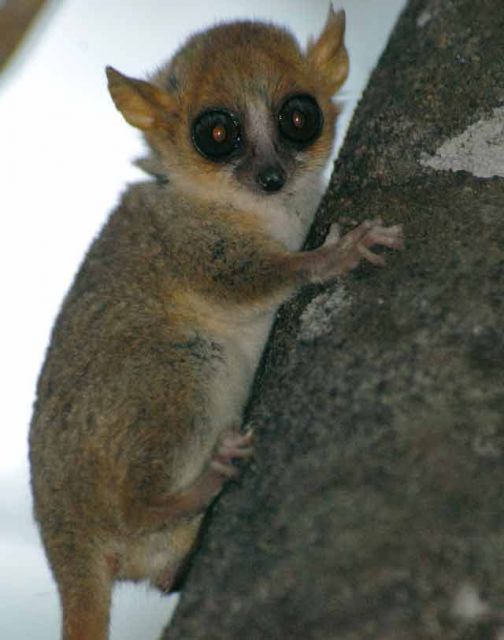 Also critically endangered is the Madame Berthe’s mouse lemur. Weighing just an ounce, it’s the smallest primate in the world. © Conservation International/photo by Russell A. Mittermeier
Also critically endangered is the Madame Berthe’s mouse lemur. Weighing just an ounce, it’s the smallest primate in the world. © Conservation International/photo by Russell A. Mittermeier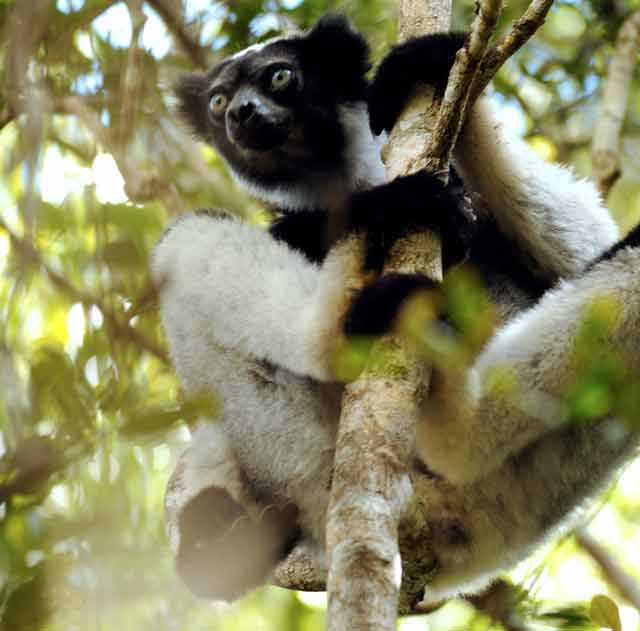 The indri, the largest species of lemur, is among those listed as critically endangered. © Conservation International/photo by Russell A. Mittermeier
The indri, the largest species of lemur, is among those listed as critically endangered. © Conservation International/photo by Russell A. Mittermeier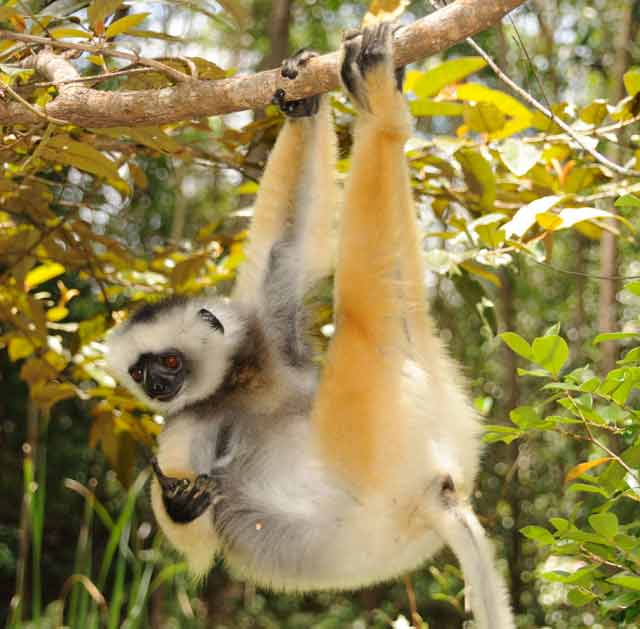 The diademed sifaka hangs out. © Conservation International/photo by Russell A. Mittermeier
The diademed sifaka hangs out. © Conservation International/photo by Russell A. Mittermeier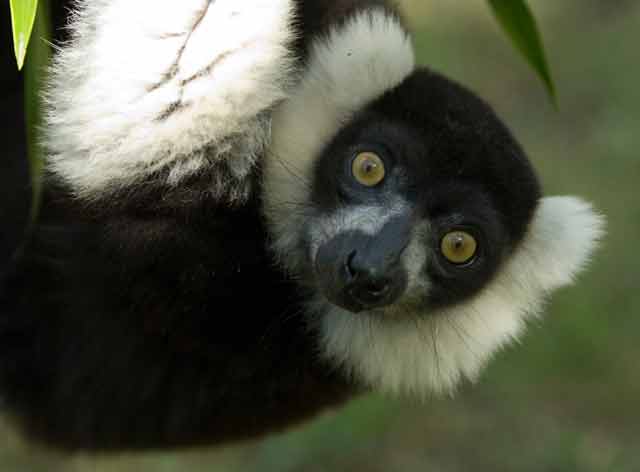 The black-and-white ruffed lemur © Conservation International/photo by Russell A. Mittermeier
The black-and-white ruffed lemur © Conservation International/photo by Russell A. Mittermeier

